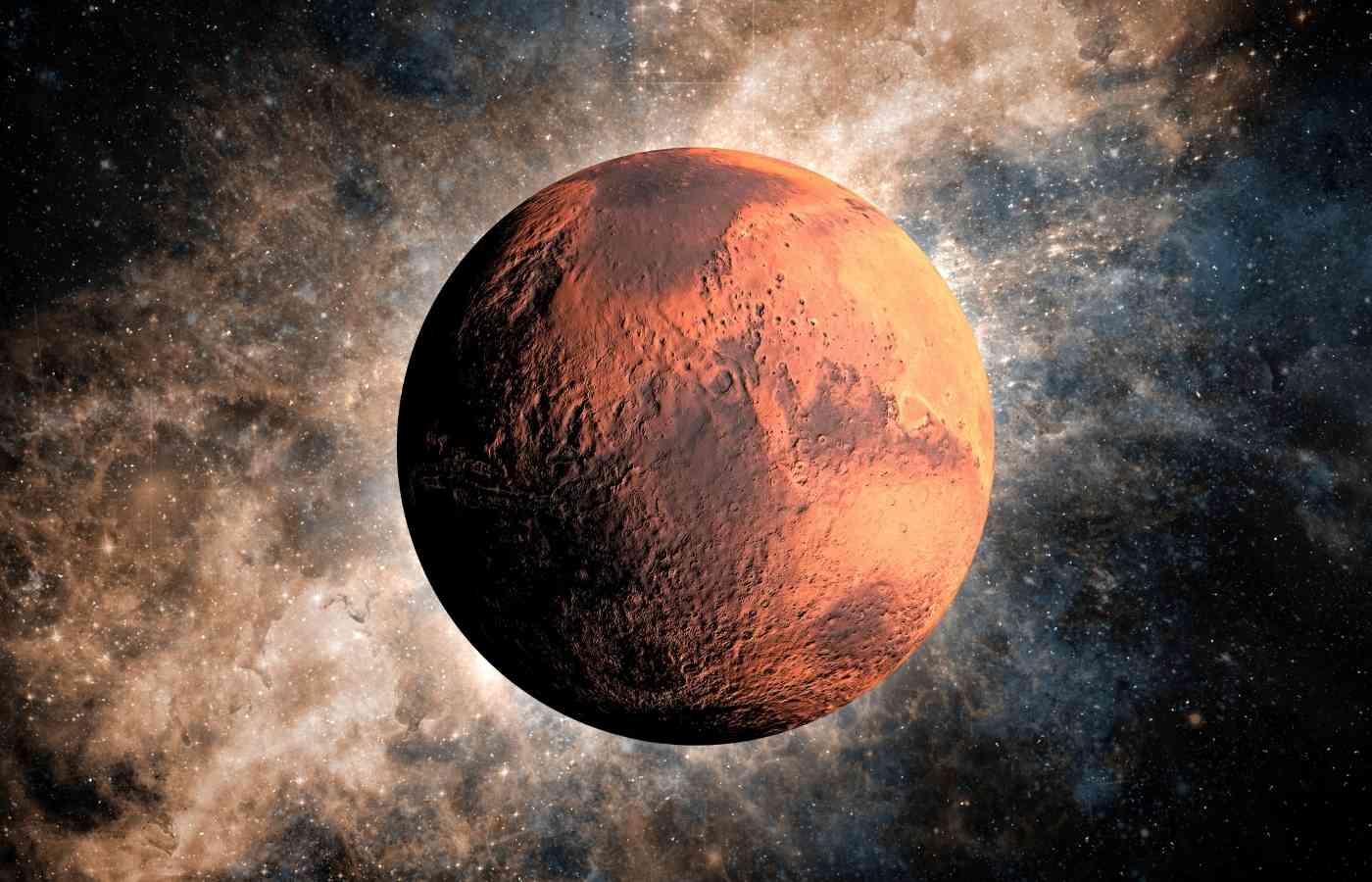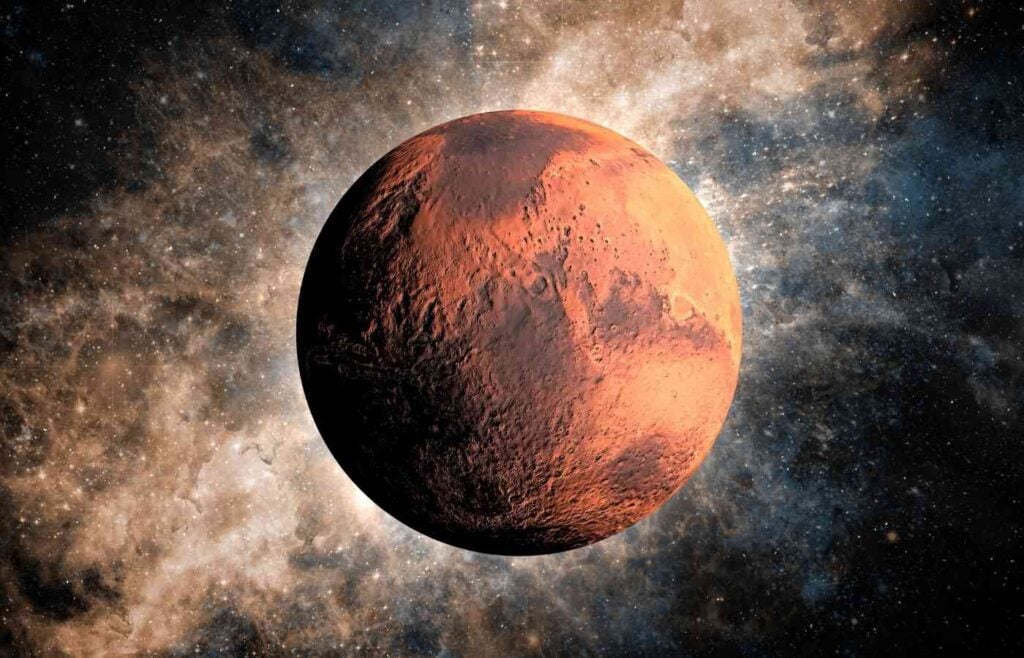
November 28 is “Red Planet Day” in the United States.
The date of this unofficial holiday commemorates the day in 1964 when Mariner 4, a robotic interplanetary probe, was launched by NASA and the Jet Propulsion Laboratory (JPL) to visit Mars!
It’s the perfect day to celebrate and learn more about the 4th planet from the sun.
Here are some fascinating facts about Mars that your kids will love:
1. The planet Mars is Named after the Roman God of war because of its red color that symbolized blood.
2. Mars in the fourth planet from the sun.
3. Mars is the second smallest planet in the solar system (after Mercury).
4. Mars is about half the size of Earth.
5. Mars measures 4,219 miles long.
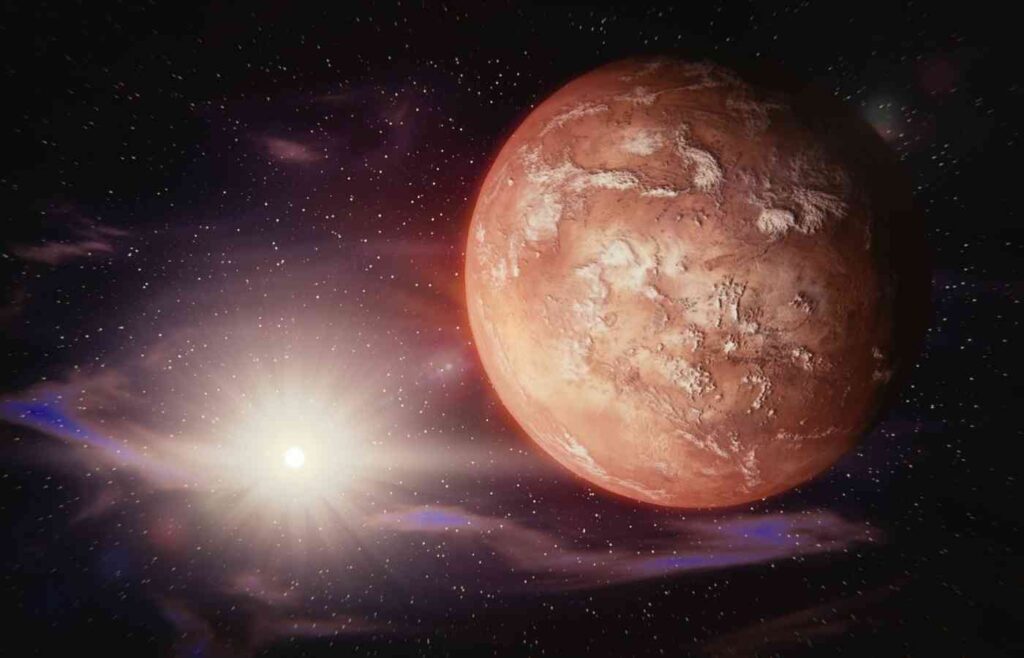
6. If the Sun were as tall as a typical front door, Earth would be the size of a dime, and Mars would be about as big as an aspirin tablet.
7. Mars formed about 4.5 billion years ago, when gravity pulled swirling gas and dust in.
8. Just like Earth, the surface of Mars is hard and rocky. This means it is a “terrestrial planet”. You can walk on it! It’s not a “gas giant” like Jupiter and Saturn.
9. Although Earth is much bigger that Mars, they both have approximately the same amount of land, because most of Earth is covered in water.
10. Mars is called the “Red Planet” because its soil has a lot of iron. The iron rusts (it turns into iron oxide), making the surface and atmosphere appear red.
11. Martian “soil” is called regolith.
12. Mars actually has many more colors than just red. At the surface, observers can see colors gold, tan, and brown.
13. Mars is an extremely cold planet, because it is further from the sun than Earth. At the equator, temperatures can reach 68 degree F, but at its poles they can dip to as low as -284°F. Brr! The average temperature is -80 degrees Fahrenheit.
14. Earth and Mars are the only two planets in the solar system with polar ice caps. They are made up of solid carbon dioxide or dry ice.
15. Mars has two moons, named Phobos and Deimos. The moons of Mars are both smaller than Earth’s moon.
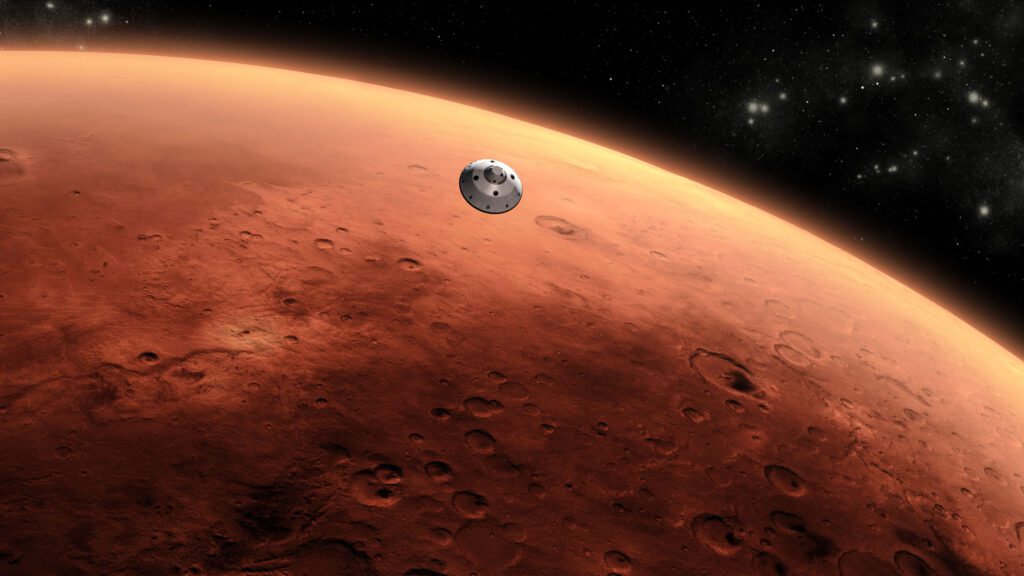
16. The moon Phobos is predicted to suffer a collision with Mars in the distant future. It is moving slowly toward Mars and it’s believed that in about 50 million years it will either break apart or crash into Mars.
17. The moons are potato-shaped because they have too little mass for gravity to make them spherical.
18. Mars has the largest dust storms in the solar system. The huge dust storms can last for months and cover the entire planet.
19. A Mars dust storm can reach wind speeds of up to 125 miles per hour.
20. A day on Mars is 24 hours and 37 minutes, slightly longer than an Earth day.
21. A Martian day is called a sol.
22. A year on Mars is 687 Earth days long (almost twice as long as Earth years). This is because it takes a lot longer than Earth to complete its orbit around the Sun.
23. Mars’s gravity is only 38% that of Earth.
24. You could jump much higher on Mars because gravity is weaker there.
25. You would weigh less on Mars because gravity is weaker there. For example, if you weigh 100 pounds on Earth, you would only weigh 38 pounds on Mars Find out how much you would weigh on Mars.

26. The lack of gravity can lead to a loss of calcium and weaker bones when astronauts or space travelers return to Earth.
27. Mars is home to the highest mountain and largest volcano in our solar system. It’s a volcano called Olympus Mons. It’s 14 miles high (three times the height of Mount Everest!)
28. Mars also has the biggest canyon in our Solar System. It is named Valles Marineris. It is 2,500 mi long and reaches 4 miles deep. (To compare, the Grand Canyon on Earth is only 226 miles long, and only 1 mile deep.)
29. A total of 43,000 craters with a diameter of 5 km (3.1 mi) or greater have been found on the surface of Mars.
30. The northern hemisphere does not have many craters. It is relatively smooth. We know this thanks to the Mars Rovers.
31. The southern hemisphere is filled with highlands and lots of craters (including Valles Marineris mentioned above).
32. Hellas Planitia is a huge crater on Mars created from an ancient impact. It is located on the Red Planet’s southern hemisphere and it’s over 3.7 mi deep and 1.242 mi across.
33. One of the most distinctive features on Mars is its “channels.” These channels look like they could have been made by running water.
34. Mars has a very thin atmosphere. In fact, the atmosphere on Mars is about 100 times thinner than the Earth’s atmosphere.
35. Mars has seasons just like Earth, but they last longer. This is because it takes longer for it to orbit the Sun. The seasons vary in length since Mars has an egg-shaped orbit around the Sun.

36. The longest season on Mars is spring, which lasts for 194 days.
37. The shortest season on Mars is autumn, lasting only 142 days.
38. No human has ever stepped on foot Mars.
39. There is very little oxygen on Mars. You would need a spacesuit with oxygen to go outdoors.
40. The atmosphere on Mars is too thin for liquid water to remain on the surface.
41. The atmosphere on Mars is mostly comprised of carbon dioxide, nitrogen, and argon gases.
42. The first spacecraft to land on Mars were the Viking Landers, which touched down on the surface in 1976.
43. The first NASA rover to land on Mars was called Sojourner. It landed in 1997.
44. Two more NASA rovers, Spirit and Opportunity, landed in 2004.
45. In 2018, NASA rover “Curiosity” found evidence of liquid water (a lake) under the planet’s polar caps. This would be a possible sign that there was once life on Mars.

46. The rover “Perseverence” is the fifth rover to land on Mars. Its job is to drill into the surface to learn more.
47. There are actually pieces of Mars here on Earth! In the past, asteroids hit Mars, which caused debris to be sent into space. Some of this debris landed on our planet as meteorites.
48. The first person to observe Mars with the use of a telescope was Galileo Galilei. He observed the Red Planet in 1610.
49. Mars is 141.6 million miles away from the Sun.
50. If you stood on Mars and looked at the Sun, it would appear about half the size as we see it on Earth.
51. Light from the Sun reaches Mars in about 13 minutes.
52. The name of the month March is derived from Mars. Read more here: https://mars.nasa.gov/all-about-mars/facts/mars-day/
53. Mars is visible to the naked eye. You can see it without the use of a telescope or binoculars.
54. The biggest planet in the Solar System is Jupiter, and it has more than 20 times the diameter of Mars.
55. Throughout much of the 1800’s, it was believed that life on Mars existed because an astronomer Giovanni Schiaparell thought that he observed straight lines on Mars’ surface. He thought these were canals. As more advanced telescopes were built, scientist learned the straight lines were an illusion.
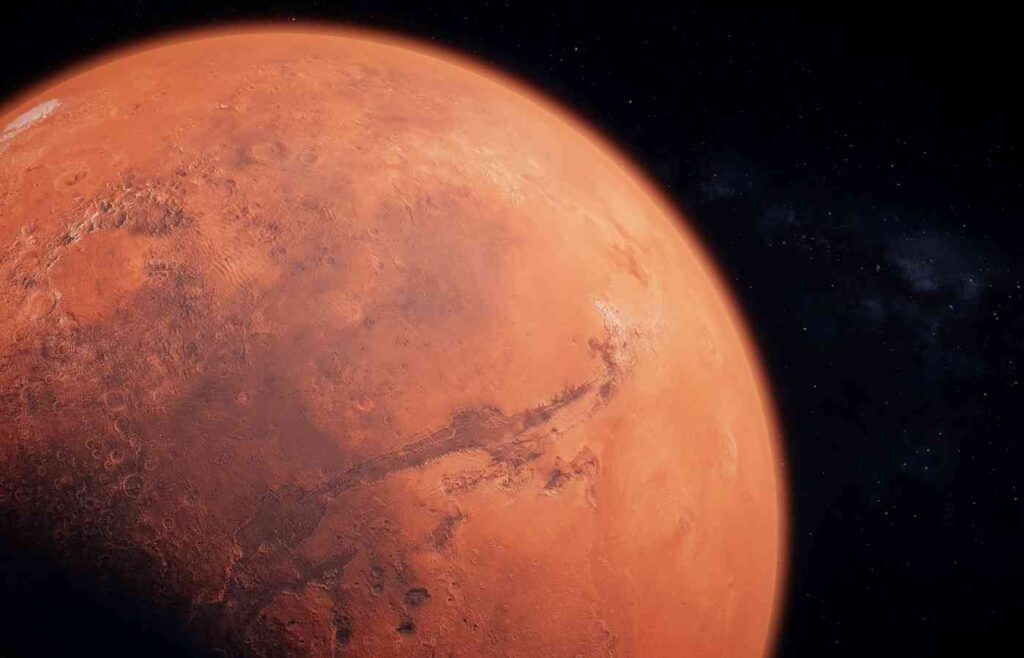
56. Mars will likely be the first planet that a human will step foot on.
57. There is evidence of ancient river valley networks, lakebeds, and deltas as well as minerals and rocks on the surface that are only formed when there is liquid water.
58. Some of the features on the surface of Mars suggest that around 3.5 billion years ago, the planet experienced huge floods.
59. Of all of the planets in the solar system, only Earth has confirmed life and Mars is believed to possibly be hospitable for life.
60. There have been 40 missions to Mars, but only 18 of the missions were successful.
61. NASA’s Mariner 4 sent the first close up images of Mars in 22 photos in 1965.
62. In 1971, Mariner 9 was the first spacecraft to orbit Mars. It completed the mapping of almost the entire surface of Mars.
63. In 1997, Sojourner as the first wheeled rover to explore the surface of Mrs.
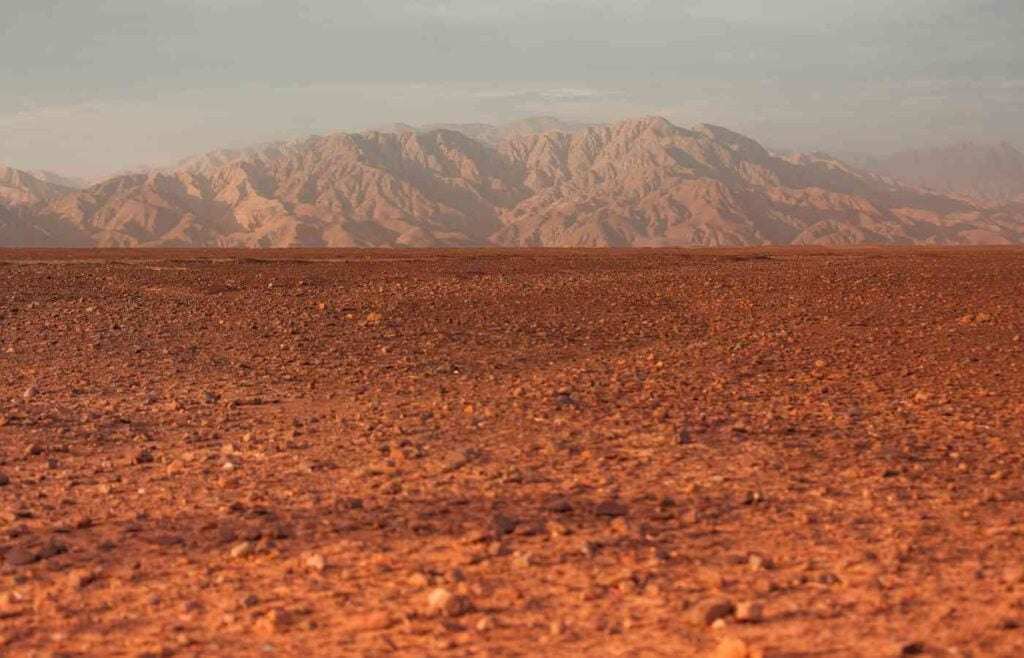
64. In 2004, Twin Mars Exploration Rovers named Spirit and Opportunity found evidence that long ago Mars had liquid water on its surface.
65. In May 2021, China became the second nation to ever land successfully on Mars when its Zhurong Mars rover touched down.
Frequently Asked Questions About Mars
Is Mars bigger than Earth?
No, Mars is not bigger than Earth. Mars is about half the size of Earth. It measures 4,219 miles long. Mars is the second smallest planet in the solar system (after Mercury). If the Sun were as tall as a typical front door, Earth would be the size of a dime, and Mars would be about as big as an aspirin tablet.
What is Mars made of?
Just like Earth, the surface of Mars is hard and rocky. This means it is a “terrestrial planet”. You can walk on it! It’s not a “gas giant” like Jupiter and Saturn. Mars is called the “Red Planet” because its soil has a lot of iron. The iron rusts (it turns into iron oxide), making the surface and atmosphere appear red.
Is Mars hot or cold?
Mars is an extremely cold planet, because it is further from the sun than Earth. At the equator, temperatures can reach 68 degree F, but at its poles they can dip to as low as -284°F. Brr! The average temperature is -80 degrees Fahrenheit.
Earth and Mars are the only two planets in the solar system with polar ice caps. They are made up of solid carbon dioxide or dry ice.
Does Mars have water?
No, the atmosphere on Mars is too thin for liquid water to remain on the surface. There is evidence of ancient river valley networks, lakebeds, and deltas as well as minerals and rocks on the surface that are only formed when there is liquid water. Some of the features on the surface of Mars suggest that around 3.5 billion years ago, the planet experienced huge floods.
Does Mars have moons?
Yes, Mars has two moons named Phobos and Deimos. The moons of Mars are both smaller than Earth’s moon. The moons are potato-shaped because they have too little mass for gravity to make them spherical. The moon Phobos is predicted to suffer a collision with Mars in the distant future. It is moving slowly toward Mars and it’s believed that in about 50 million years it will either break apart or crash into Mars.
Can Mars support life?
No, of all of the planets in the solar system, only Earth has confirmed life and Mars is believed to possibly be hospitable for life. Mars has a very thin atmosphere that is about 100 times thinner than the Earth’s atmosphere. Mars will likely be the first planet that a human will step foot on.
There is evidence of ancient river valley networks, lakebeds, and deltas as well as minerals and rocks on the surface that are only formed when there is liquid water. Some of the features on the surface of Mars suggest that around 3.5 billion years ago, the planet experienced huge floods.
We hope you loved these interesting facts about Earth’s brother planet, Mars! It’s truly an incredible planet with so many mind-blowing features.
See more NASA photos from Mars here.
Here are some books we love to learn more about Mars:
Related Articles:
25 Interesting Facts About Comets For Kids
50 Surprising Facts About Neptune For Kids
Emperor Penguin Facts for Kids
Calie Herbst, Editor-in-Chief of Milwaukee With Kids, has spent over a decade combining her experiences as a parent of three to create a hub for Milwaukee’s family adventures.
Her decade-long teaching career in Milwaukee Public Schools and academic background, including a Master’s in Teaching from Marquette University and dual B.A.s in Sociology and Spanish from the University of Wisconsin – Madison, fuel her passion for inclusive and engaging family content.
Calie is also a recognized voice in local media, contributing to WISN Channel 12 News, WTMJ Wisconsin Morning News, Fox 6’s Real Milwaukee, and B93.3.
Discover more about Calie’s journey and editorial approach on her About Page and Editorial Policy Page.


